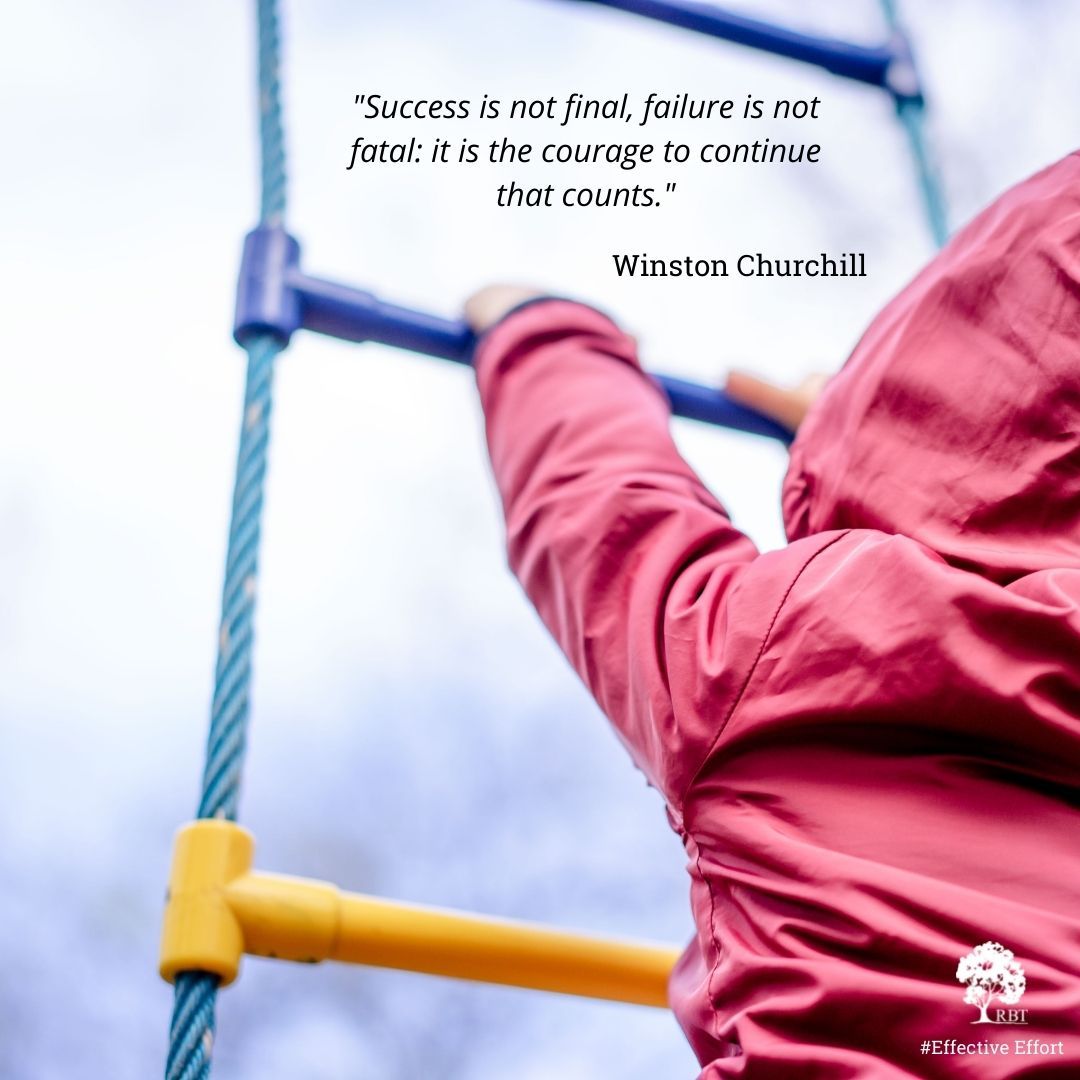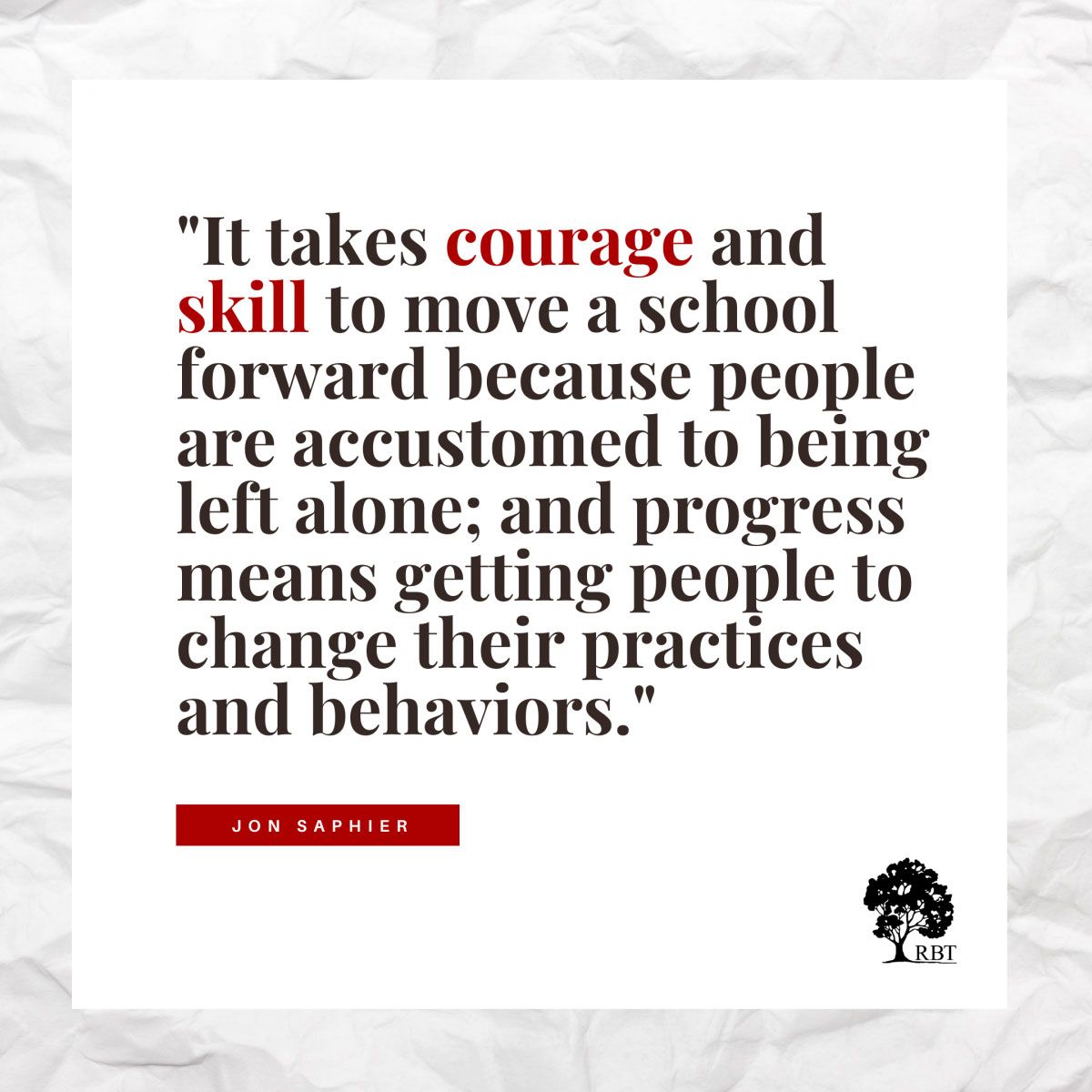Book Excerpt: The Courage to Lead
The following is an excerpt of a chapter from Jon Saphier's forthcoming book on High Expertise Teaching and how to get more of it in more places, more of the time. Due out in 2023. Learn More
How do we strengthen our courage and conviction against the forces of resistance when we try to change fundamental aspects of a flawed system? |
Jon Saphier |
There are many sources for gaining how-to skills for having difficult conversations. This chapter is related to difficult conversations, but is not about those skills. It is about having the courage to launch those conversations to begin with or making the decisions that may result in having them. It is also about launching processes which we believe are important for overcoming our fears about the consequences we might experience by making decisions to undertake changes in how things are done and/or to confront negative behavior of people in our organization.
This chapter is both for individual leaders who face these issues, but also for leaders of leaders in central offices whose actions can either obstruct or be a tremendous support for actions that are both judicious and courageous. I listed courage as a topic for training leaders in the previous chapter on Leadership Programs because, as this chapter will put forth, improving calcified systems takes courage, and courage can be learned. But the topic invites the question: courage for what?
But the topic invites the question: courage for what? |
Jon Saphier |

Be the First to Know
This is a sample from a chapter from Jon Saphier's new book on High Expertise Teaching, due out in 2023
Learn more about the full contents of the book and sign up to be notified of its release in 2023
Transforming one’s role to become a true leader for equity and for the improvement of instruction can threaten comfortably established roles like being a warm father or mother figure for one’s faculty, a buffer against parents, a protector from the central office. There can be virtue in some of these roles, but a loved principal can shelter under these other comfortable roles to avoid the discomforts and potential conflict it takes to improve teaching and learning.
There are many moments in leadership (and in life) that call for courage because they call for confrontation, and many of us try to avoid that. We fear a confrontation may threaten our relationships or our status within the community, even in some cases our job. But, the challenging situations I want to put on the table first are about instruction. Much too often there is intolerable inertia behind the decisive action school leaders could take to rectify truly unacceptable teaching practices (Platt et al, 2010). And the rhythms of life in administrative positions make it all too easy to allow the busyness of daily practice – the post-it note phone messages and emails of people who want our attention – to consume our focus.

Unacceptable Behaviors
Lasalle and Johnson (2019) use the phrase “Defining the Acceptable Floor” in a potent case study in their book Shattering Inequities. A leader, in this case a new superintendent, takes personal actions that are immediate, clear and definitive to establish teacher behaviors that are unacceptable. These events happen during school visits with three different principals. I think it would be fair to say that his actions define flat out unacceptable behavior, not just a floor. The newly hired leader in this story has already proven a good listener and respectful of the voices of others in the district for a month when these school visits occur. In no way does he seem to be reacting in an over-the-top way to what he sees. His actions, however, send the message far and wide that unacceptable teaching behaviors will be confronted up front promptly, and that is a marching order from the top to other leaders. Vivid demonstrations from the top of a response to unacceptable behavior do not have to be as dramatic as the famous “burning desk on the lawn” story in Corporate Cultures (Deal and Kennedy 1982), but they do have to be decisive enough and visible enough to set standards for the whole organization.
The unacceptable behaviors we see as readers in this case study are blatant marginalization of students of color (two instances) and one instance of cruel, fear-inspired intimidation of a student by a teacher to get compliance with a relatively trivial procedural norm.
In the case study described by Lasalle and Johnson, no one in authority has ever confronted these teachers on their behavior. As readers we are inclined to say “how outrageous!” But experienced school people will know that such outrages are not rare. There are a number of reasons. One is that these teachers often fly under the radar because their transgressions are not observed by people in authority. Another is that they hide them when administrators are present. A third is that the offenders are high influence people for reasons of political connections or parent advocates who are their cheerleaders, thus insulating them from criticism. A fourth is that rumors and stories have reached the ears of administrators, but they have ducked tracking the stories down because there is no agitation coming from families or community. There are other fears we will describe in the body of the chapter below.

In the case study described by Lasalle and Johnson, no one in authority has ever confronted these teachers on their behavior. As readers we are inclined to say “how outrageous!” But experienced school people will know that such outrages are not rare. There are a number of reasons. One is that these teachers often fly under the radar because their transgressions are not observed by people in authority. Another is that they hide them when administrators are present. A third is that the offenders are high influence people for reasons of political connections or parent advocates who are their cheerleaders, thus insulating them from criticism. A fourth is that rumors and stories have reached the ears of administrators, but they have ducked tracking the stories down because there is no agitation coming from families or community. There are other fears we will describe in the body of the chapter below.
The point is that of all the reasons for drawing lines in the sand, none are more important than behaviors that are damaging children and restricting learning. It is even possible that some teacher behaviors like shaming children do not come from bad will, but simply from wrong-headed beliefs. Others like deficient planning and preparation may be masked by a teacher’s joviality, charisma or warmth, and be less visible for the harmful cost on student learning. But no matter -- perhaps they don’t make the newspaper or provoke court cases, but they can do profound injury to students.
So now let’s go into how leaders build courage...